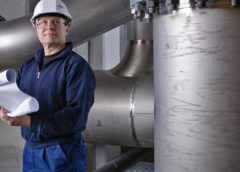
Wastewater aeration is a process that comprises the introduction of air into wastewater to enable aerobic bio-degradation of pollutant components in the water. It’s an integral component of the majority of biological wastewater treatment systems. Dissimilar to chemical treatment which utilizes chemicals for the reaction and stabilization of contaminants in wastewater streams. The biological treatment utilizes microorganisms which naturally occur in wastewater to degrade the water’s contaminants. This article runs you through the treatment method and why aeration is crucial to the process.
When to use aeration
In industrial and municipal wastewater treatment in Australia, aeration is an aspect of the stage that’s called the secondary treatment process. The most common secondary treatment option is the activated sludge process. In the activated sludge treatment process, aeration is based on getting air pumped into the tank. The air then promotes the wastewater’s microbial growth. The microbes then feed on the organic materials, thus forming flocks which then settle out easily. After they’ve settled in a separate settling tank, the bacteria that form the flocks of ‘activated sludge’ which are continuously recirculated back into the aeration basin to boost the decomposition rate.
How aeration works
Aeration provides bacteria with oxygen for the treatment and stabilization of wastewater. Bacteria requires oxygen to enable the occurrence of bio degradation. The supplied oxygen is used by bacteria in the wastewater in breaking down organic matter that contains carbon, to form water and carbon dioxide. Without the presence of enough oxygen, bacteria are unable to biodegrade incoming organic matter within reasonable periods. In most of the companies that offer biological wastewater treatment in Australia, if dissolved oxygen is absent, degradation then has to take place under septic conditions, which are odorous, slow, and yield conversions of pollutants that aren’t complete.
Under septic conditions, aspects of the biological process convert Sulfur and hydrogen to transform carbon into methane and form hydrogen peroxide. Other carbon will then be transformed into organic acids which produce low pH conditions within the basin and make water a bit more challenging to treat, and also promote the formation of odors. Organic matter bio degradation is a truly slow biological process if oxygen is absent.
Why aeration is crucial for the treatment of wastewater
Aeration is the most crucial aspect of any treatment system that utilizes the activated sludge secondary treatment process. An aeration system that is well designed features a direct impact on the volume and level of wastewater treatment that will be achieved by any treatment plant. An evenly distributed and ample supply of oxygen in an aeration system is crucial for any economically viable, rapid, and effective treatment of wastewater. Thus, oxygen influences a lot of features and results that will eventually be obtained from the treatment of wastewater.
These are the foremost reasons why aeration is quite crucial to the biological wastewater treatment process. There are lots of varying aspects involved, thus consult experts if you have any questions or need any further information. The experts in Australia are always ready to offer suggestions and recommendations. Such suggestions and recommendations help you in making the most informed decisions possible. There are lots of varying offerings out there from varying brands that will help you.








